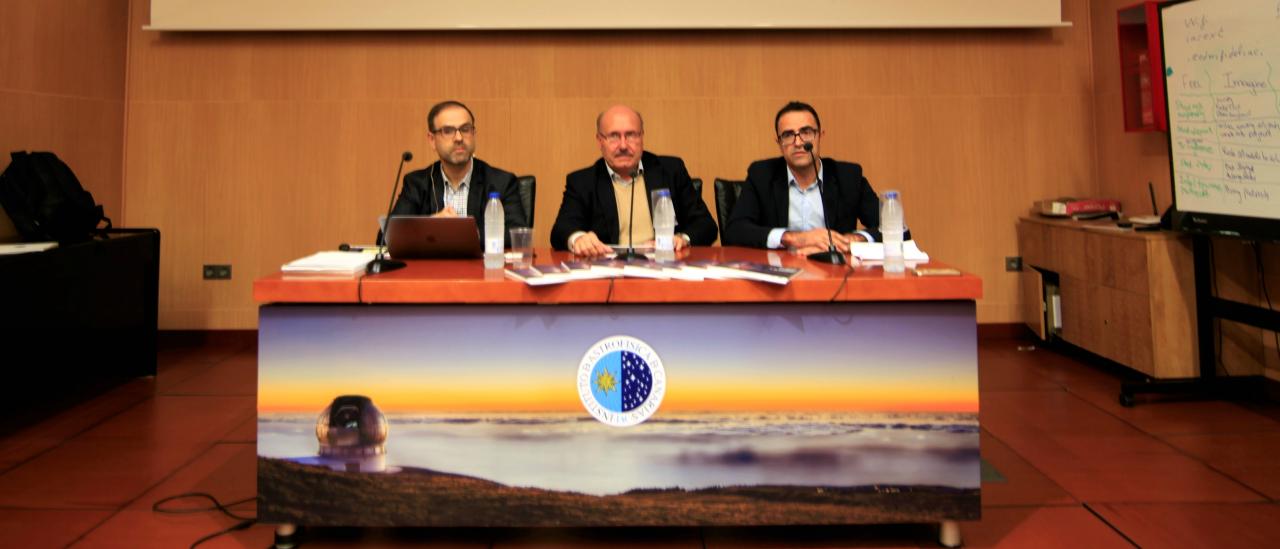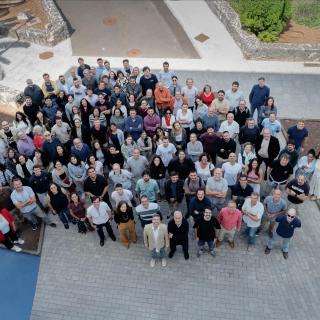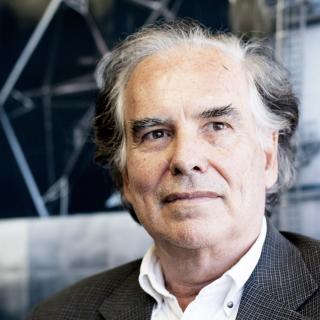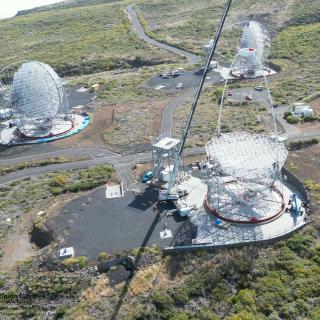This morning at a press conference at the IAC the latest study of the economic and social impact of the Astrophysics Sector in the Canaries was presented, carried out by a team from the University of La Laguna and directed by the economist Professor Juan José Díaz Hernández.
The “Astrophysics Sector” in the Canaries comprises the IAC, the numerous scientific institutions from around the world who work at the Canary Observatories, by the related industry dedicated to the sector, and by the services related to these installations. After analyzing the activity of the sector in the Islands, Juan José Díaz Hernandez, Associate Professor at the ULL and principal investigator of the study which was presented this morning at the IAC Headquarters in La Laguna, estimates that for every euro invested in these public and private companies during 2016 3.65 euros were generated in the Gross Interior Product of the Canaries.
At the press conference, with the participation of Rafael Rebolo López, the Director of the IAC, and Anselmo Sosa Méndez, manager of the Office of Institutional Projects and Transfer of the results of Research of the Institute the results of this research were made known, It has been published as a book with the collaboration of the ULL, the General Foundation University of La Laguna, and the Centre for Consumer Studies (CESCO).
Economic and Social Impact
In the book, whose title is “A study of the Economic and Social impact of Astrophysics in the Canaries”, we find measurements of the contribution of the economic acitivity during 2016 by the IAC, fby the over 70 institutions from 25 countries which operate in the Teide Observatory (Izaña, Tenerife) and in the Roque de los Muchachos Observatory (Garafía, La Palma) as well as by the industrial element dedicated to providing all the different types of supplies and the services of lodging, meals, transport, and auxiliary services in the astrophysical installations.
Among the most important data in the study we pick out the fact that the production of goods and services derived from the whole of the sector analyzed in this work came to a value of 124 million euros in 2016. In addition it contributed to the creation of 1,554 full time jobs during the year, including workers contracted directly, by the sector, as well as in jobs derived from by it.
The analysis carried out based on this research finds that although the Astrophysics Sector in Tenerife represents only 0.43% of the Gross Internal Product of the Island, and 0.34% of the wage earners, in La Palma these proportions are 3.3% of the Gross Internal Product and 2.3% of the fuill time wage earners.
The Director of the IAC reminded us that this report had been presented at the last meeting of the Governing Council of the Institute in the presence of the President of the Government of the Canaries, Fernando Clavijo, and the Minister of Science, Innovation and Universities, Pedro Duque, among others. “Although we had made estimates, we had not seen things just this way. We knew how much money we received from the public administrations but we did not know exactly the economic returns going to society” said Rebolo. He added that “The public administrations receive in taxes and social security contributions some 40% more that they transfer to the IAC”.
The manager of the OTRI, Anselmo Sosa noted that “The IAC, since 2005, has been collecting data about the economic impact of the user institutions, mainly the Roque de los Muchachos Observatory, because today it is necessary to offer not only the technological and scientific value proviede by the set of scientific installations and its human capitak, but also the value which this represents to society.
In future activities there will be an in depth study of how the activity of this Sector impacts socially “contributing “ said Anselmo Sosa “ to improve the education within our region, to generate inspiration and scientific vocation, and to improve social perception, and offer cultural enrichment, no only in La Palma and Tenerife, but also in the rest of the Autonomous Regioj.
After words of thanks to all of those whohad collaborated in this study, its main author, Juan José Díaz Hernández explained that “the use of a model base don Input-Output tables and on the Keynesian multiplier of expenses has allowed us to evaluate the final product, the full time employment generated, the salaries paid, and the gross added value of the Astrophysics Sector in the Canaries in the year 2016. Similarly,” he added, “we have estimated the contribution of this Sector to the tax take of the state and of the autonomous region, as well as the contribution to the General Treasury of the Social Security.
Large Telescopes
Looking to the future, the author of the study considered the impact that this network of institutions and companies would have by attracting new and important investments in the Canaries, mainly by the construction and commissioning of new telescopes, such as the European Solar Telescope (EST), the new 4m robotic telescope (Liverpool 2) and the Cherenkov Telescope Array (CTA) which already has one of its telescopes at the Roque de los Muchachos Observatory (ORM). The report also includes the importance of the possible choice of the ORM as the site of the Thirty Meter Telescope (TMT), which could double the current impact figures.
To conclude, the Study shows that “Astrophysics can play a relevant role in the Canaries by driving new strategies of economic development which will contribute to diversify the productive structure, and that by investment in research and development new models of sustainable, high value business are being promoted.
Link to the PDF: "Study of the Economic and Social Impact of Astrophysics in the Canaries”.



